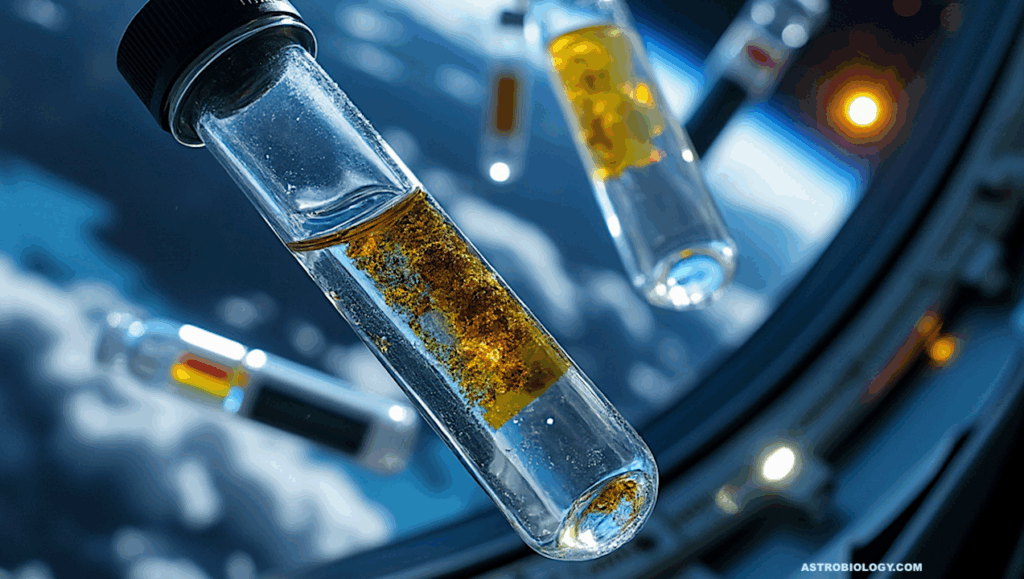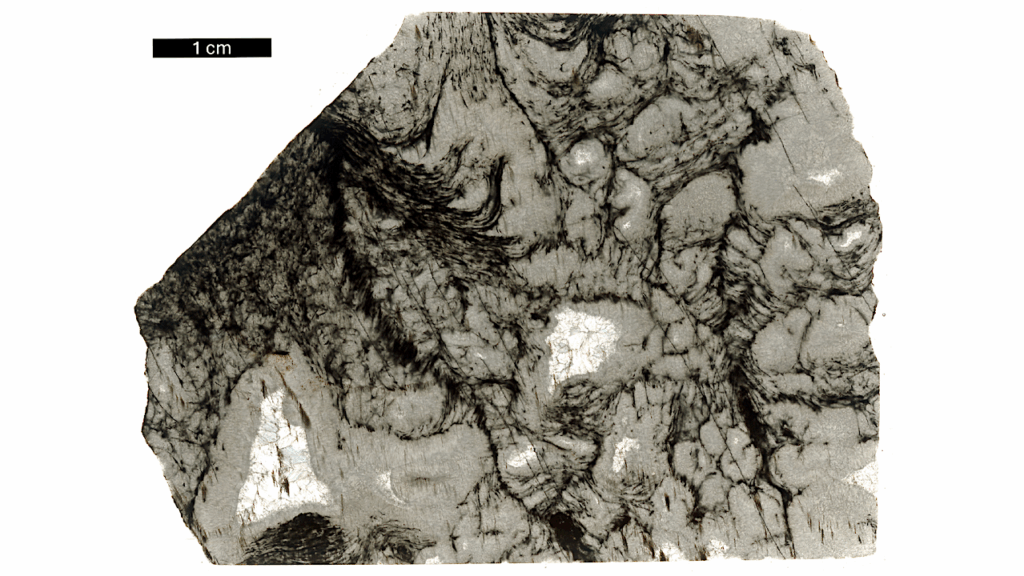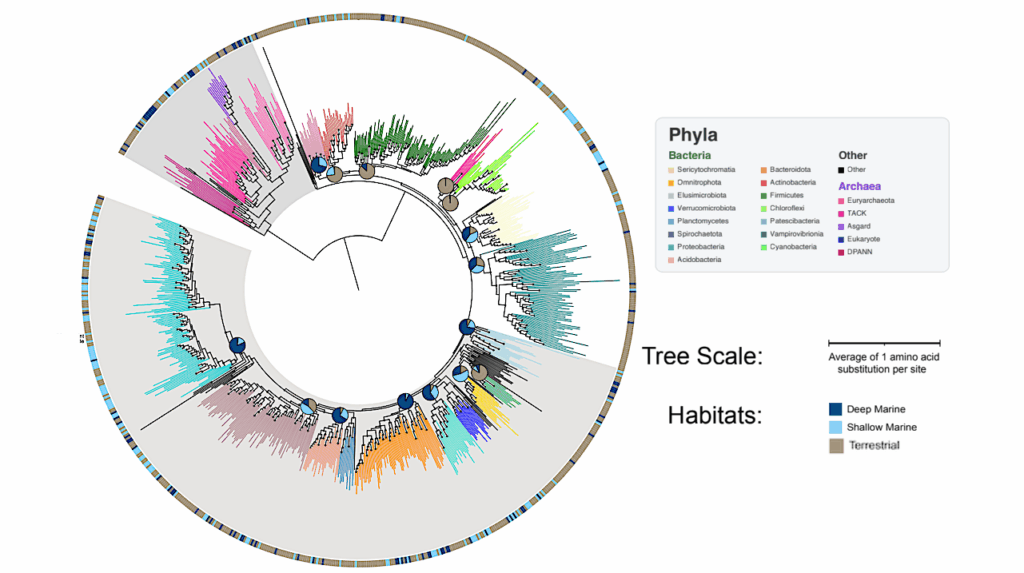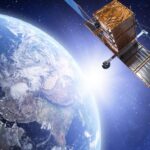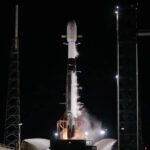Now Reading: Unveiling the Chemical Complexity and C/O Ratio of the HD 163296 Protoplanetary Disk: Constraints from Multi-line ALMA Observations of Organics, Nitriles, Sulfur-bearing, and Deuterated Molecules
-
01
Unveiling the Chemical Complexity and C/O Ratio of the HD 163296 Protoplanetary Disk: Constraints from Multi-line ALMA Observations of Organics, Nitriles, Sulfur-bearing, and Deuterated Molecules
Unveiling the Chemical Complexity and C/O Ratio of the HD 163296 Protoplanetary Disk: Constraints from Multi-line ALMA Observations of Organics, Nitriles, Sulfur-bearing, and Deuterated Molecules

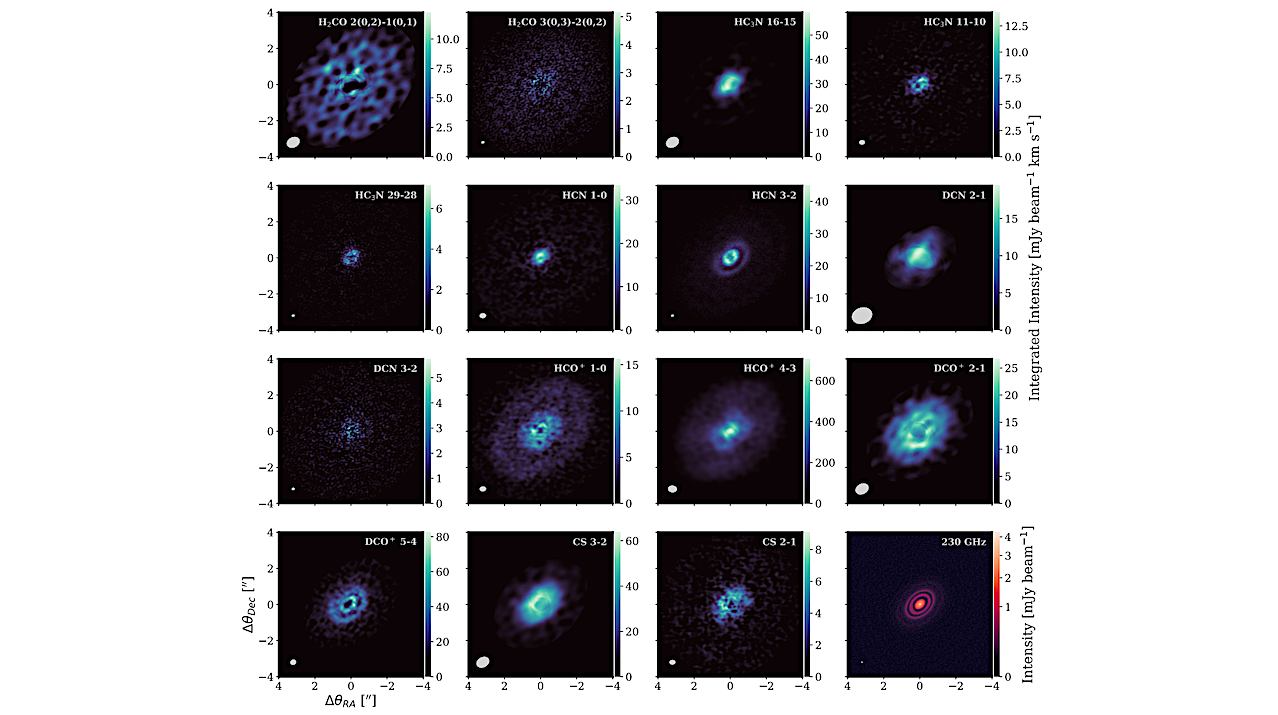
Integrated intensity maps of the detected transitions. A continuum image highlighting the rings and gaps is displayed at the bottom right. The synthesised beam is indicated at the bottom left of each panel.– astro-ph.EP
The physical and chemical conditions within a protoplanetary disk play a crucial role in determining its chemical composition, which is subsequently inherited by any forming planets.
To probe these conditions, high-resolution molecular line observations, coupled with modelling, are essential. In this study, we investigate the chemistry of the nearby, massive, and relatively line-rich protoplanetary disk around HD 163296 using high-resolution observations from ALMA across Bands 3, 4, 6, and 7.
We constrain the disk-averaged and radial distributions of column density and excitation temperature for the detected molecules using the new retrieval code DRive. The disk chemistry is modelled using the astrochemical code PEGASIS, with variations in the initial elemental C/O ratio.
Our modelling, informed by molecular observations of HCO+, DCO+, HCN, DCN, CS, HC3N, H2CO, CH3OH, HNCO, and NH2CHO, allows us to place strong constraints on the C/O ratio, with a best-fit value of 1.1 that is broadly consistent with previous estimates. We present the highest-resolution DCO+ emission map of this disk to date, revealing triple-ringed chemical substructures that closely align with the dust continuum rings.
Additionally, our results provide the first and most stringent upper limits on the column densities of NH2CHO and HNCO in this protoplanetary disk, measured at < 7e11 cm-2 and < 1e11 cm-2, respectively. Our chemical models suggest that NH2CHO and HNCO predominantly form on grain surfaces within the disk.
However, physico-chemical desorption mechanisms are inefficient at releasing these species into detectable gas-phase abundances, yet they remain promising targets for future ALMA observations.
Parashmoni Kashyap, Liton Majumdar, Edwin A. Bergin, Geoffrey A. Blake, Karen Willacy, Stéphane Guilloteau, Anne Dutrey, Sheng-Yuan Liu, Thomas Henning, Paul F. Goldsmith, Dariusz C. Lis, S. Maitrey, Neal Turner, Raghvendra Sahai, Chin-Fei Lee, Masao Saito
Comments: Accepted for publication in The Astrophysical Journal Supplement Series (ApJS). 43 pages, 21 figures, 4 tables
Subjects: Earth and Planetary Astrophysics (astro-ph.EP); Astrophysics of Galaxies (astro-ph.GA)
Cite as: arXiv:2511.10882 [astro-ph.EP] (or arXiv:2511.10882v1 [astro-ph.EP] for this version)
https://doi.org/10.48550/arXiv.2511.10882
Focus to learn more
Submission history
From: Liton Majumdar
[v1] Fri, 14 Nov 2025 01:23:04 UTC (15,859 KB)
https://arxiv.org/abs/2511.10882
Astrobiology, Astrochemistry,
Stay Informed With the Latest & Most Important News
-
 012024 in Review: Highlights from NASA in Silicon Valley
012024 in Review: Highlights from NASA in Silicon Valley -
 02Panasonic Leica Summilux DG 15mm f/1.7 ASPH review
02Panasonic Leica Summilux DG 15mm f/1.7 ASPH review -
 03How New NASA, India Earth Satellite NISAR Will See Earth
03How New NASA, India Earth Satellite NISAR Will See Earth -
 04And Thus Begins A New Year For Life On Earth
04And Thus Begins A New Year For Life On Earth -
 05Astronomy Activation Ambassadors: A New Era
05Astronomy Activation Ambassadors: A New Era -
06SpaceX launch surge helps set new global launch record in 2024
-
 07Space Force plans new ‘Futures Command’ amid pressure to speed up modernization
07Space Force plans new ‘Futures Command’ amid pressure to speed up modernization












